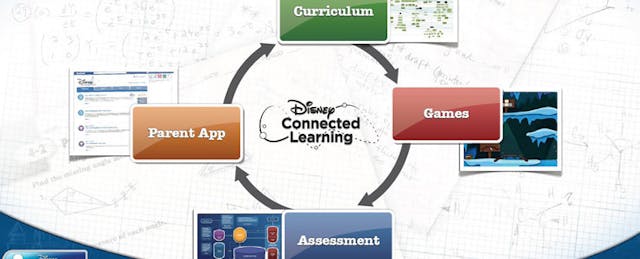When Disney rolls something out, there's a fanfare of trumpets, a red carpet and sometimes even a glittering burst of fireworks.
By contrast, the launch of the Disney Connected Learning program has been as subtle as, oh, say a green screen.
Six years ago, Disney began exploring how use its considerable design, entertainment and financial muscle in the "learning" arena. It decided to try to create games that children would find genuinely entertaining that were nonetheless built on legitimate learning "goals."
Over the past two years, it has quietly been refining eight games based on learning objectives in its wildly popular online site for kids, Club Penguin. Several of the games have been hits. "Pufflescape," for instance, is the second most popular game in Club Penguin. More than 30 million children have played it over the past two years.
"No child should have to choose between a 'learning' game and 'fun' game," says Starr Long, who is executive producer of Disney Connected Learning.
Whether the students are learning anything deeper than they do when they play the purely "entertaining" games in Club Penguin, however, is still anybody's guess.
Disney, on the other hand, has learned a lot in the process. This has been a long project: After a slow two-year start, in 2009 it recruited top talent in the massively multiplayer online industry--Starr Long, who started his career as director of Ultima Online, now the longest-running MMO in history. It convened a team of more than a dozen well-regarded educators including Stanford's Roy Pea and the University of Georgia's John Olive and Linda Labbo. Together, they identified 2,500 learning goals, or targets--crucial concepts that students need to understand by the fifth grade. They worked through the ideas until they had learning concepts for students from preK through 5th grade. The goals could not contradict the Common Core standards, noted Long, but they also had to be relevant around the globe. "One woman even wrote a dissertation on this," Starr says.
Over the next four years, Long's team built a programming environment to support how to connect those learning goals to "events" or actions. They also built a developer's platform, a parent-facing app, the digital plumbing to report children's progress through the games to that app and so on. They evaluated between 20 and 40 game prototypes. Two years ago, they began beta testing their eight top game picks.
Currently three of the 26 or so games in Club Penguin incorporate these learning goals: Pufflescape, Jelly Bean Counter and Bits & Bolts. (Another five games are slated to go online in April.)
In Pufflescape, a creature (a Puffle) bounces and glides through an obstacle courses, collecting prize tokens and unlocking higher levels.
The Puffles interact with their environment according to the rules of Newtonian mechanics. Different levels of the game encode or represent different learning goals.
Meanwhile, about 30,000 parents of those Penguin-playing kids have download a Facebook app that creates a "profile" as the kid plays through the games, letting parents know what learning concepts their kids have played through. Play through a level and the app will share that you and your Puffle have experienced simple levers or more complex ones. "We want to empower the parents," Long says. "There's a real need for parents to connect with kids who are living a different life than we did."
(Parents get other benefits from their Facebook app, too, such as learning "secret" codes that they can share with kids who get stuck on games.)
The three learning games currently in action in Club Penguin echo familiar game play themes that were pioneering in the likes of Donkey Kong and even Tetris.
But these are just the beginning.
Long says that Disney will soon be releasing five preschool titles for mobile platforms, created from scratch, that use Disney characters such as Cinderella, Toy Story, Ariel, Cars and Fairies--and are based on the scaffold of learning goals created by the team of educators. "We want to build content and long-term, want to work with other to build content" based on the Connected Learning platform, Long says. Disney has not yet worked out the specifics of its partner strategy.
But will kids absorb mechanics or the rules of motion from their Puffles or whatever characters are in the game? Will they understand that the rules of physics will dictate how a creature will bounce or if it can catch a lever in motion at a certain moment? Or, skeptics will ask, couldn't kids just go outside and throw a baseball at the roof of the house and watch it fall?
It's too soon to tell what kids will learn from the games, Long says.
"We're not making any claims about what they're learning," he observes. "We are just saying that the child is exposed to the concepts that are inherent in the game play."
Many edu-game companies shy away from any efforts to do rigorous testing of how much learning might happen in their game. Long isn't daunted by the problem; he believes that Disney needs more data--say, enough games that at least half the learning objectives were covered by games. So far, the games constructed cover less than 5% of the concepts, he says.
What he has learned is this: "You can make these games as compelling and exciting as one that don't have learning concepts embedded in them."


